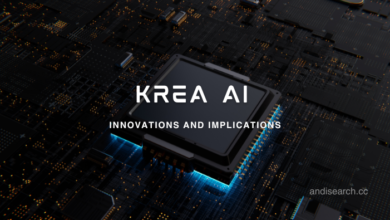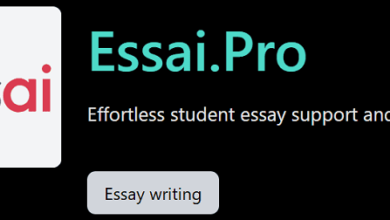Harpy AI: Exploring The Modern Technology 2025

Have you ever heard of Harpy AI? If not, you’re in for a treat. As someone who has experience working with artificial intelligence systems, I can confidently say that Harpy AI is making waves in the AI world. In this blog post, I’ll break down what Harpy AI is, why it matters, and how it’s transforming the way we interact with technology. Let’s dive in!

Why is Harpy AI Important?
1. Improved User Experience
One of the standout features of Harpy AI is its ability to provide a smooth and engaging user experience. Traditional AI systems often struggle with understanding the nuances of human language, like sarcasm, slang, or complex sentence structures. Harpy AI overcomes these challenges by using advanced NLP algorithms to decode and respond appropriately.
2. Versatility
Harpy AI isn’t limited to one specific use case. Whether it’s assisting users with technical support, automating repetitive tasks, or even generating creative content, this AI system can do it all. Its adaptability makes it a game-changer for businesses looking to streamline operations and improve efficiency.
3. Enhanced Accessibility
For people with disabilities, Harpy AI can be a valuable tool. By understanding voice commands and providing accurate responses, it can help users navigate technology more easily. This aligns with the broader goal of making tech accessible to everyone, regardless of their abilities.
Key Features of Harpy AI
1. Contextual Understanding
Harpy AI excels at understanding the context of a conversation. For instance, if you’re talking to a virtual assistant powered by Harpy AI and mention “it” without specifying, the system can infer what “it” refers to based on previous interactions. This makes conversations feel more natural.
2. Emotional Intelligence
Unlike traditional AI systems that rely solely on keywords, Harpy AI can pick up on the emotional tone of a user’s input. For example, if a user expresses frustration, the AI might respond with empathy and offer solutions in a calming manner.
3. Learning and Adaptation
Harpy AI uses machine learning to continuously improve. The more interactions it has, the better it gets at understanding and responding to user needs. This self-learning capability ensures that the system stays relevant and effective over time.
How is Harpy AI Being Used Today?
1. Customer Support
Many companies are leveraging Harpy AI to enhance their customer service. By integrating it into chatbots and helpdesk systems, businesses can provide quick and accurate support to customers, reducing wait times and improving satisfaction.
2. Content Creation
Content creators and marketers are using Harpy AI to brainstorm ideas, draft articles, and even optimize content for SEO. Its ability to generate high-quality text makes it a valuable tool for anyone in the content space.
3. Personal Assistants
Smart home devices and virtual assistants are becoming more intelligent thanks to Harpy AI. From setting reminders to answering complex questions, these AI-powered assistants are making everyday tasks easier and more efficient.
Challenges and Ethical Considerations
While Harpy AI offers many benefits, it’s important to address potential challenges:
- Data Privacy: Like any AI system, Harpy AI relies on data to function effectively. Ensuring that user data is handled securely and ethically is crucial.
- Bias: AI models can sometimes inherit biases from their training data. Continuous monitoring and updates are necessary to minimize this risk.
- Over-Reliance: As Harpy AI becomes more capable, there’s a risk of people becoming overly reliant on it, potentially reducing critical thinking and problem-solving skills.
The Future of Harpy AI
The potential for Harpy AI is enormous. As technology evolves, we can expect to see even more innovative applications that make our lives easier and more connected. From healthcare to education, the possibilities are endless. Developers are constantly working on refining the system, ensuring it becomes more human-like and efficient with each iteration. Read more




